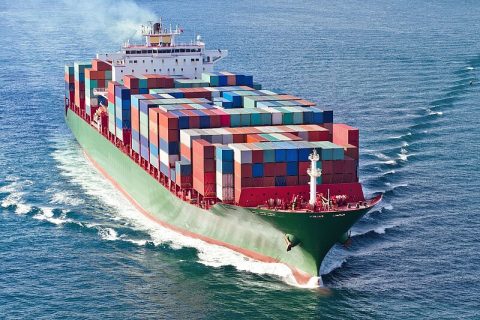
Ti: freight forwarding market to end 2021 with 12 pct rise
After jumping 19 percent in the first half of 2021, the global freight forwarding market is expected to close the year with a 12 percent increase over 2020. The analyst Transport Intelligence (Ti) notes that the value of the global freight forwarding market hit €195,07 million on the back of large-scale economic rebound in the wake of reopening after Covid-19.
The growth is driven in large part by North America and Asia Pacific which have grown by 22.6 percent and 21.8 percent respectively in the first half of 2021. The air forwarding market experienced faster growth, expanding at 26.0 percent over the period, while the sea forwarding market saw slower growth of 10.4 percent.
Supply chain disruption, capacity constraints, and the resurgence of the virus will continue to impact trade and slow down the economic recovery from Covid-19 in the short term, and as a result will weigh on global freight forwarding growth.
The global freight forwarding market is expected to grow at a 5.1 percent compound annual growth rate (CAGR) over the five years to 2025 as the global economy and trade recover from the Covid-19 pandemic. The growth forecast is driven in large part by Asia Pacific and North America expansions over the period which have CAGRs of 6 percent and 4.9 percent respectively, serving to highlight the importance of those regions to the global market.
The air forwarding market is forecast to have the slightly faster growth, expanding at a 5.6 percent CAGR over the period, while the sea forwarding market is expected to grow slightly less quickly at 4.5 percent CAGR over the period.
The direction of several key drivers will be determining factors in the strength of global forwarding growth over the five years to 2025. The first of these is the pace of global recovery from the Covid-19 pandemic. The speed at which each region can rollout vaccine programmes and move beyond economic and social lockdowns will play a vital role in determining how effectively it can participate in growth over the period, according to the analyst.
Despite lockdowns, however, global trade growth has accelerated significantly in 2021, primarily as demand has returned in consumer markets. The WTO revised its global merchandise trade expectations upwards to 10.7 percent in October – from 8.0 percent forecast earlier in the year – as a result. Over the five years to 2025 merchandise trade is forecast to return closer to historical averages, with the WTO forecasting growth of 4.7 percent in 2022.
Finally, over the period to 2025, the capacity constraints and supply chain bottlenecks that have been a feature of the global logistics market in 2021 will dissipate. This will result from both the above-mentioned return of demand and trade levels to historical averages, as well as a normalisation of the capacity situation on air and sea freight markets.
By September 2021, demand and capacity were still unbalanced in air freight markets, with IATA reporting demand (measured in cargo tonne-kilometres) was 9.1 percent higher and capacity was down 12 percent on international routes, when compared to the same month in 2019, what it terms pre-Covid levels. While the demand for air freight is set to normalise and demand and global trade return historical levels over the next few years, the return of passenger air travel and associated belly cargo space, as well as the expansion of freighter capacity, will also help rebalance the market.
A similar situation is likely to play out in sea freight and sea forwarding markets, when significant capacity constraints unwind over the forecast period. Carrier capacity is set to grow significantly in the coming years, with analysis from BIMCO showing some 619 container ships are on order, with a total capacity of 5.3m TEU, of which 381 ships (or 3.44m TEU) have been ordered in 2021 alone. This new capacity is set to enter the market from 2023 onwards. Further, the significant congestion at ports across the world is set to unwind over the forecast period.
You just read one of our premium articles free of charge
Register now to keep reading premium articles.




